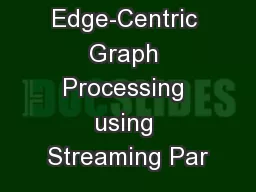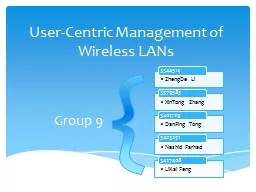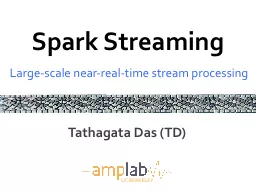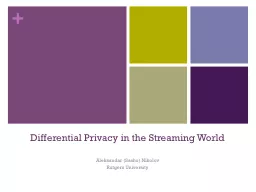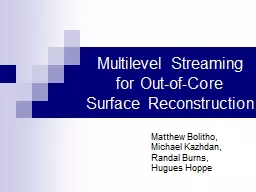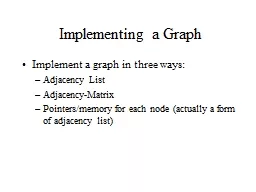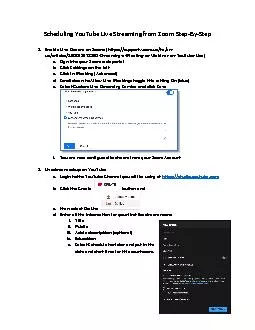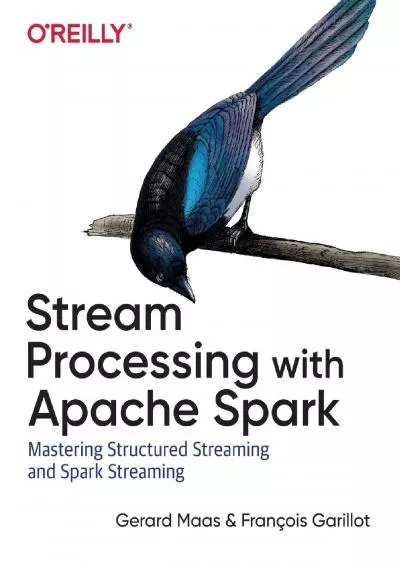PPT-X-Stream: Edge-Centric Graph Processing using Streaming Par
Author : trish-goza | Published Date : 2017-01-13
Amitabha Roy Ivo Mihailovic Willy Zwaenepoel 1 Graphs 2 HyperANF Pagerank ALS Interesting information is encoded as graphs Big Graphs Large graphs are a subset
Presentation Embed Code
Download Presentation
Download Presentation The PPT/PDF document "X-Stream: Edge-Centric Graph Processing ..." is the property of its rightful owner. Permission is granted to download and print the materials on this website for personal, non-commercial use only, and to display it on your personal computer provided you do not modify the materials and that you retain all copyright notices contained in the materials. By downloading content from our website, you accept the terms of this agreement.
X-Stream: Edge-Centric Graph Processing using Streaming Par: Transcript
Download Rules Of Document
"X-Stream: Edge-Centric Graph Processing using Streaming Par"The content belongs to its owner. You may download and print it for personal use, without modification, and keep all copyright notices. By downloading, you agree to these terms.
Related Documents

